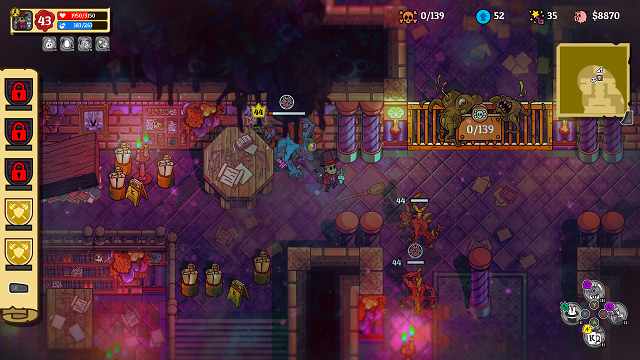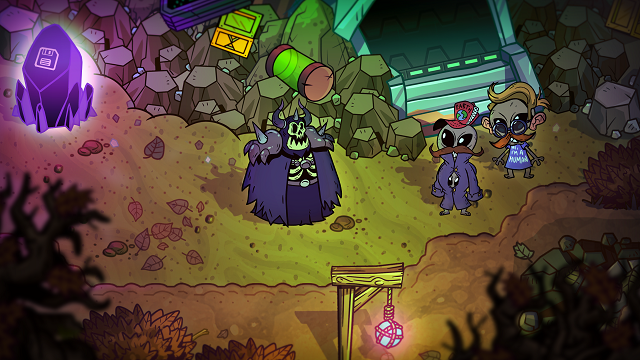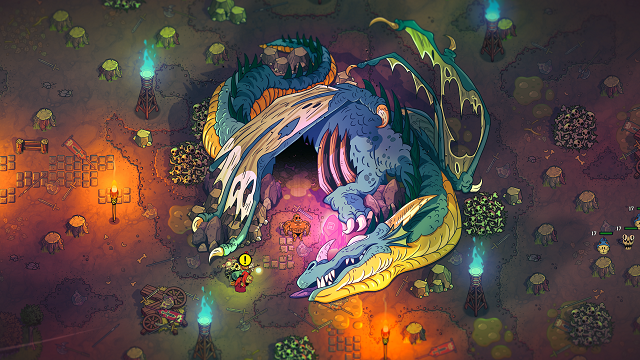The RPG is a tried and true genre that typically feeds into specific user tastes – that being progression and customization. Fine-tuning these aspects of game design can be difficult, leading to balancing issues in which many of an RPG’s mechanics are underutilized or not utilized at all.
This is a problem Nobody Saves the World aims to fix with its interconnected systems. Nobody Saves the World’s intent is clear from the outset.
Nobody Saves the World Review – Heroes Can Take Any Form
The story involves the pursuit of Nostramagus, a powerful wizard. A calamity threatens the world – one which can only be fought with Nostramagus’ knowledge and magical acuity. The protagonist, named Nobody, sets off on their journey after discovering an affinity for Nostramagus’ wand, allowing them to shapeshift into various creatures.
Unlike so many RPGs, it only takes around half an hour for the gameplay loop to introduce itself, unleashing you onto the semi-open map. Narrative and setting merely exist as a taxi, getting you to your mechanically rich destination as quickly as possible. Dialogue scenes rarely extend past the minute mark, eschewing contemporary design trends in favor of good, old-fashioned video gaming.
Character interactions are charming, but they never interfere with the pacing. Don’t go into Nobody Saves the World expecting dense lore. If you’re getting lost in the experience, it’s because of its ever-evolving gameplay loop.
Shapeshifting to Save the World

Nobody Saves the World gets tons of mileage out of its hook. In this case, your shapeshifting abilities influence a take on traditional RPG systems. Each form Nobody turns into acts as a different class, replete with its own passive and active abilities.
Nobody is capable of transforming into 17 other forms, ranging from a zombie to a rat to a dragon. Drinkbox Studios’ creativity is laid bare through the differentiation between forms. The ghost form can turn invisible to avoid attacks and pass through enemies, and the zombie can infect adversaries, turning them into allies upon death. There’s even an egg form, with an incubation ability that heals Nobody. There’s a ton of enjoyment derived from discovering each form’s utility.
This mechanic is further bolstered through an atypical progression system, pushing you into avenues you might not have otherwise explored. Rather than leveling up by defeating enemies, experience points are rewarded through quest completion. These come in two flavors: form quests and normal quests.
Normal quests add to the overall progression meter, dictating your level. Form quests are where things get interesting, though. Each form has a unique set of quests that add to the overall form level, simultaneously contributing to the form’s rank.
You acquire new abilities and unlock additional forms by ranking up each form. They begin simply enough, typically tasking you with damaging or killing enough enemies with the form’s starting ability. Their complexity rises along with the ranks, however. You’ll eventually be tasked with using combinations of abilities from other classes to inflict different status ailments.
The form system’s malleability, allowing you to mix and match passive and active abilities from any form, adds a captivating layer – one which feeds into every other aspect of its design.

This atypical progression system shapes an engaging moment-to-moment experience. Everyone is guilty of falling into a rut with RPGs, sticking with certain party compositions after settling upon a favorite, only switching it up when the situation demands it. But changing how you play is a regular occurrence throughout the entirety of Nobody Saves the World’s roughly 25-hour story.
Because you can’t level up by killing trash mobs in a dungeon for a few hours, you need to focus on quests. Simply prioritizing the normal quests will leave you severely under-leveled, demanding constant awareness of form quests. The structure guarantees a decent degree of familiarity with all 18 forms. After reaching some of the higher ranks, you’ll be tasked with making use of abilities you may not have access to.
By consistently forcing you out of developing habits, Nobody Saves the World’s ingenious structure can be difficult to pull away from. You want to unlock that next rank so you can unlock the next form, which has an ability you want to use on your favorite form. However, you also want to rank that form as high as possible so you can upgrade that ability because ability levels are tied to character ranks.
This progression is tied together by a basic combat system that exists to place the emphasis on ability management. Each of the active combat abilities uses a face button on a controller. Depending on the ability, you’ll need to hold the button down to perform combos or charge attacks. In other cases, combos are only performed by rapidly tapping the button assigned to the ability.
Some abilities come free, but others consume mana, requiring a watchful eye over your mana meter. This is part of the ongoing mixing and matching that makes the progression system work so well. You can’t use abilities without repercussions. A degree of synergy is required to ensure your mana pool remains consistent as many of the best abilities use mana, whether it’s the zombie’s health leach or the magician’s animal companions that fight alongside you.
You are constantly working toward some sort of achievement, on the cusp of leveling up or unlocking a new ability. There’s never any stagnation. This might send alarm bells for some. Luckily, progression is generous enough to remain sustainable. Some form quests may require more specific scenarios than others, but they never delve into frustrating territory.
Nobody Saves the World Review — The Bottom Line

Pros
- Addictive progression loop
- Dialogue doesn’t get in the way of gameplay
- Creative use of abilities and class system
Cons
- Some abilities overlap in utility
Nobody Saves the World is an excellent action RPG with unique progression and class systems. If you come to RPGs for their gameplay rather than their characters or stories, you’re going to be well-served here.
Nobody Saves the World bucks typical genre pitfalls by forcing you to experience practically every class, turning this pursuit into an engaging game in and of itself.
[Note: Drinkbox Studios provided the copy of Nobody Saves the World used for this review.]







Published: Jan 14, 2022 11:32 am